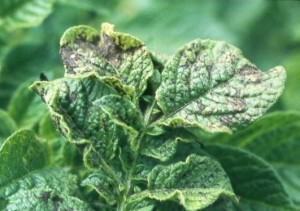

potyviridae is a family that encompasses more than 30% of known plant viruses, many of which are of great agricultural significance. The family is named after the type virus (Potato virus Y). Potyvirus are flexuous filamentous rod-shaped particles. Their genome is composed of positive-sense RNA which is surrounded by a protein coat made up of a single viral encoded protein called a capsid. All induce the formation of virus inclusion bodies called cylindrical inclusions (‘pinwheels’) in their hosts. These are composed of a single protein (~70 kDa) made in their hosts from a single viral genome product.
Potyviridae is classified by the International Committee on Taxonomy of Viruses into eight genera (Potyvirus , Brambyvirus, Bymovirus, Ipomovirus, Macluravirus, Tritimovirus, Poacevirus and Rymovirus)Based on the amino acid sequences of their coat proteins, potyviruses are now divided into eight genera. All but the Bymovirus genus are single stranded particles. Potyvirus is the largest genus in the family, with more than 100 known species. These viruses are 720-850 nm in length and are transmitted by aphids. They can also be easily transmitted by mechanical means. the nucleus of infected plant cells.
In PAmiRDB, 138 potyviridae genomes are searched against plant miRNAs in order to find intractions. Source of all viral genome used is NCBI, Entrez Genome. Only complete genomes are taken into consideration.